Some teachers like to joke that teaching is a walk in the park. If the park is Jurassic Park, that is.
But soon it can become more similar to another fictional amusement park—Westworld. Whether you’re more afraid of killer dinosaurs or intelligent robots is another story.
While their mass adoption still seems quite distant, you may have noticed that robots and AI are gradually becoming part of our everyday lives.
According to our previous study, some 52% of US respondents would be OK with AI teaching their kids at school.
We wanted to dig deeper and find out:
- In what ways AI can be used in education
- What educational challenges can be addressed with technology
- What benefits and risks new technologies pose
We’ve surveyed 1,027 internet users and asked about their opinions. Here are the most interesting things we discovered.
Artificial intelligence and trends in the modern learning experience
The educational technology market is expected to grow at a compound annual rate of about 20%. In this decade, it will reach USD 500 billion. Understanding the needs and challenges of the education sector is essential for tech companies.
About 67% of respondents believe that hybrid learning environments with remote lessons are the future of education
The majority of our survey respondents believe that remote learning is bound to stay with us even after the end of the pandemic. Some 67% see it as an opportunity and 66% think that everyone should have the right to choose if they want to stay at home or attend regular classes.
However—
Anxiety, depression, and other mental health issues caused by remote learning and COVID-19 are perceived as the biggest educational challenge
1 in 3 respondents chose mental health problems caused by social distancing as the major problem that schools need to face (out of 20 different options). This clearly shows screen-mediated learning has to consider the social role of the school environment. (Read More)
Some 64% of respondents think that chatbots, robots, or AI can replace teachers in the future
Almost 2 out of 3 respondents believe that human teachers might someday be replaced by AI. Still, 39% are worried that AI will not be able to recognize unique talents and inspire students who don’t fit the pattern. Empathy and good listening skills have been voted as some of the most important qualities of a great teacher. It may be difficult to substitute them with a piece of software.
Almost 74% of people believe that education is more accessible than ever (but its quality is getting worse)
Most respondents believe that new technologies have improved access to education. At the same time, 63% of them have reservations about the quality of education. Modern schools don’t seem to equip students with the most important skills. Still, as many as 68% of students say using AI has impacted their academic performance positively.
Social skills and good communication have been selected as the most important skills that students need to learn
Respondents believe that social skills are 25% more important than IT/programming skills. Along with good communication skills, they are far more desirable than knowledge of math or foreign languages. (Read More)
Google is a good candidate to become the top company that develops AI teaching solutions
Some 25% of respondents believe that Google is the most competent company to develop AI robot solutions for education. A separate poll among robotics enthusiasts suggests that an open-source standard that can be accessed by everyone for free would be a better solution.
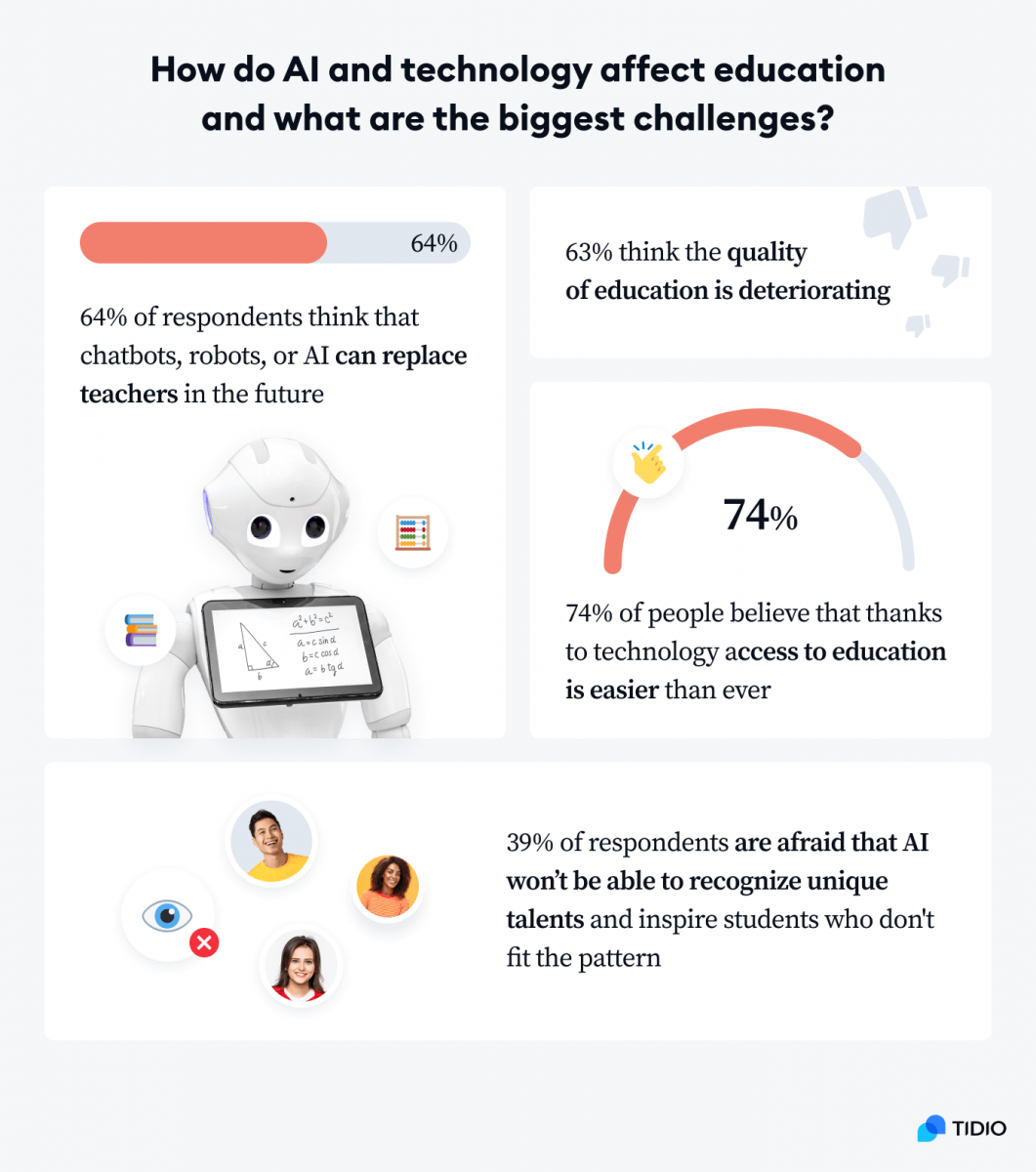
The key promises of e-learning, edtech, and machine learning in education systems
Technology gives more students immediate access to knowledge. Also, the methods of learning are more varied. As a result, everyone can find the right way to learn. According to our study, people who use e-learning apps and platforms have more confidence in the effectiveness of new technologies.
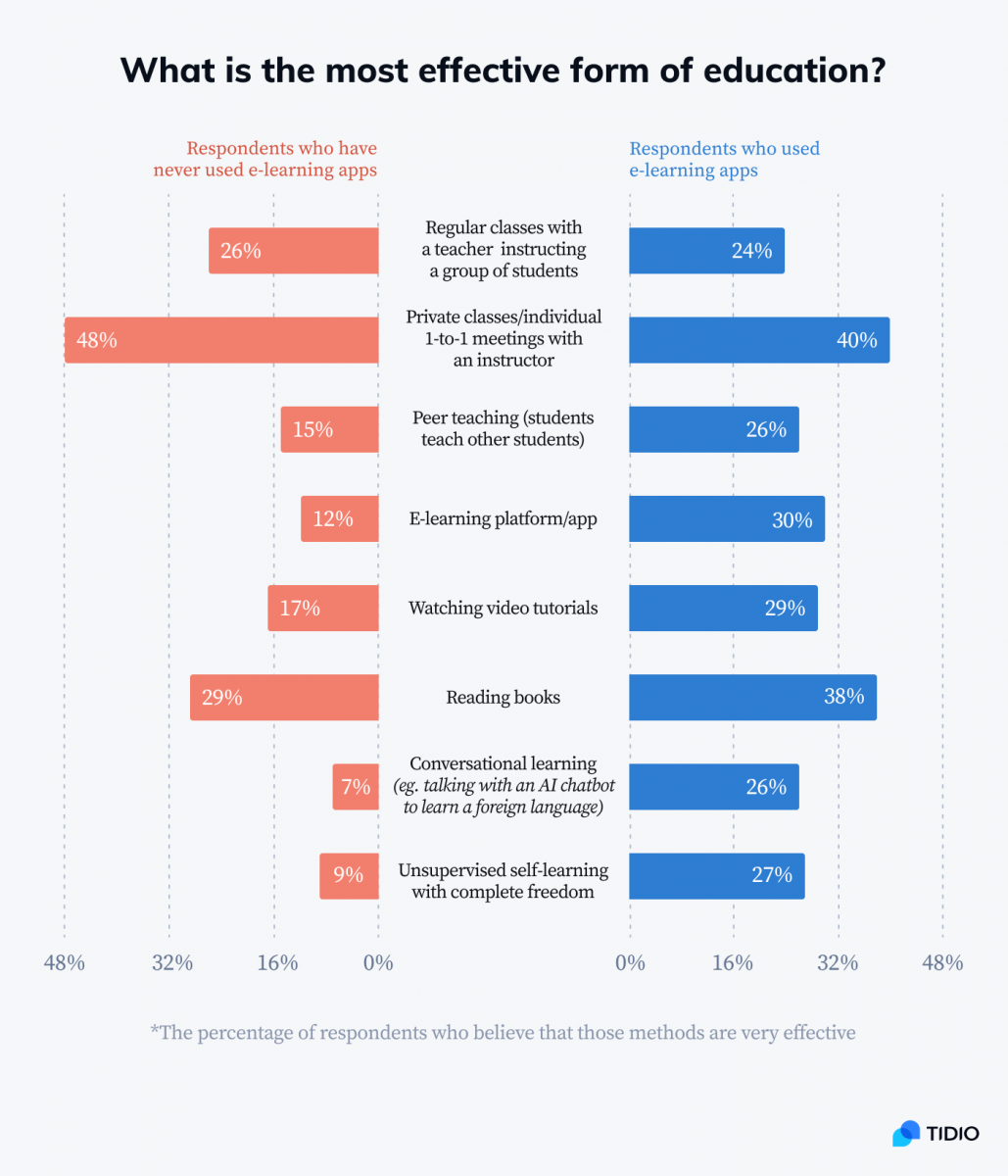
The users of online learning platforms (such as Duolingo or Brilliant) are much bigger advocates of autonomous learning. They believe in the high effectiveness of video tutorials, AI teaching assistants, books, and unsupervised learning. At the same time, they still believe that private 1-on-1 classes are the best form of education.
Some 80% of learners who used apps think that remote learning could be as effective as traditional classes. This opinion is held by only 60% of those who haven’t tried any e-learning platforms.
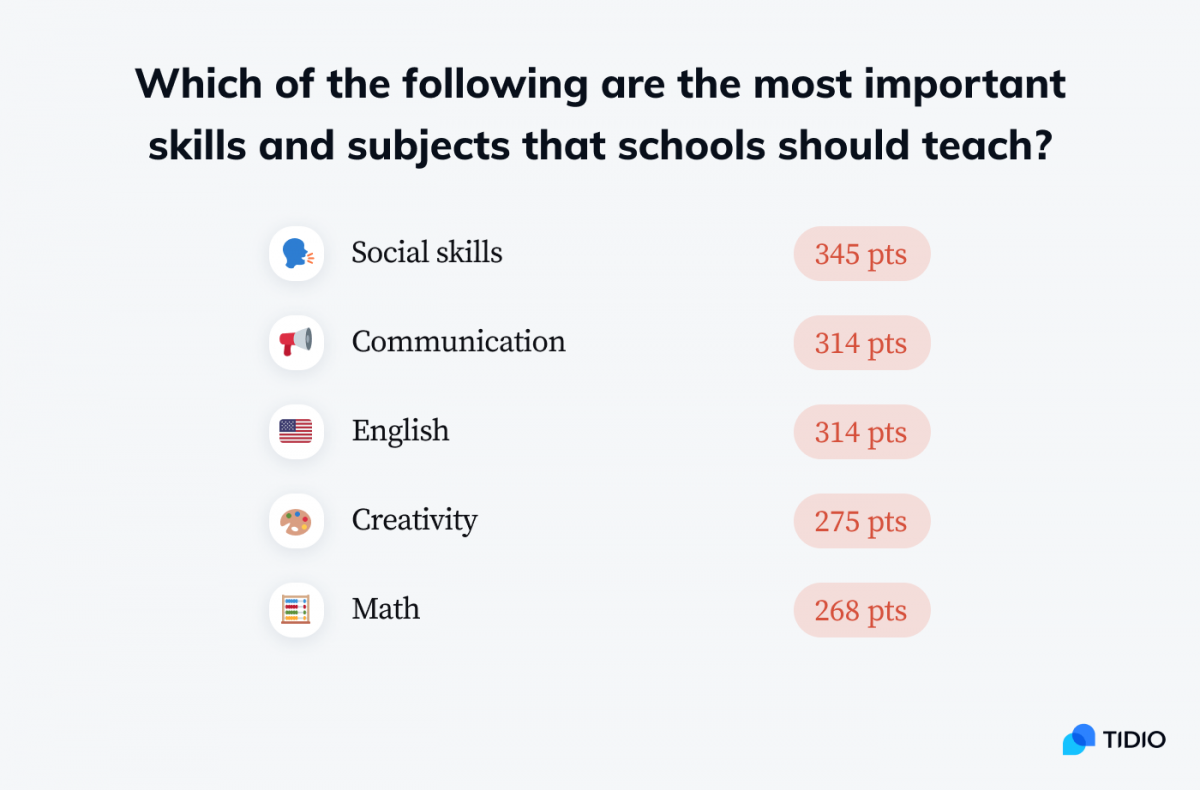
While social skills are essential for K-12 education and student development, many experts believe that remote learning is essential in higher education.
Working professionals, international students, and others can get the high-quality education needed for career advancement despite geographic and other constraints. The future of university education is giving learners choices, which todays’ technologies make possible.

The biggest challenges faced by the current education system are linked to its inefficiencies. Limited resources must be used to meet unlimited student needs.
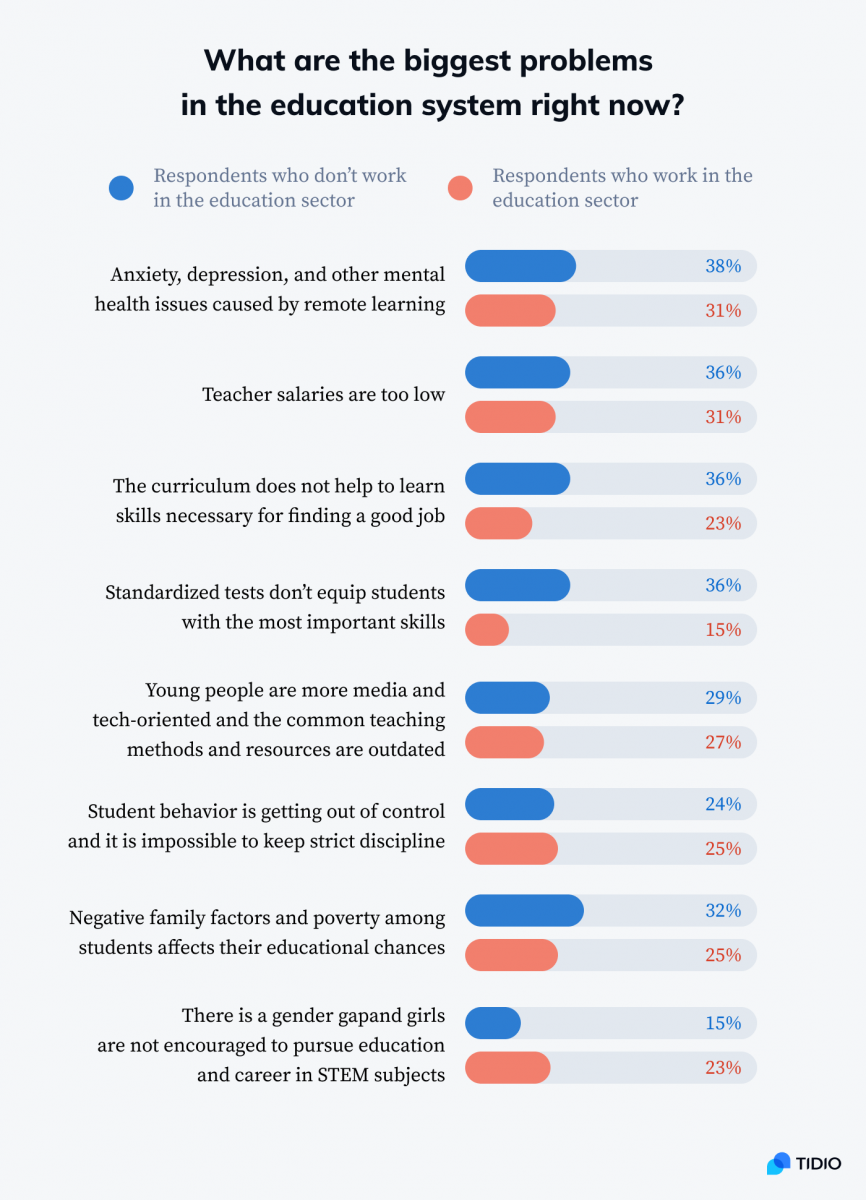
Interestingly, those who work in education, prioritize different problems. For example, the general public seems suspicious of standardized tests and worried that schools don’t equip students with the skills that are necessary for finding good jobs. About 36% of respondents believe that standardized tests are a problem that needs to be addressed while only 15% of teachers and administrative workers share their opinion.
The use of artificial intelligence and new technology in teaching can prepare students for the changing demands of the future. Also, developing a habit to use online resources for learning is key to closing the knowledge gap between people with different socioeconomic backgrounds.
Let’s take a look at some potential applications of AI in education.
Use of AI technology in educational institutions
Right now, real-world examples of how AI is being used are very limited. There are no official AI systems implemented across similar learning programs or institutions. Automation of some administrative processes, like recruitment chatbots, used to promote selected higher education schools, is still in the experimental phase.
Many original applications of AI in education were described and studied by professor Rose Luckin. Some ideas, such as tracking eye movement and other physiological data of students to monitor their behavior in real-time sound extremely dystopian and invasive.
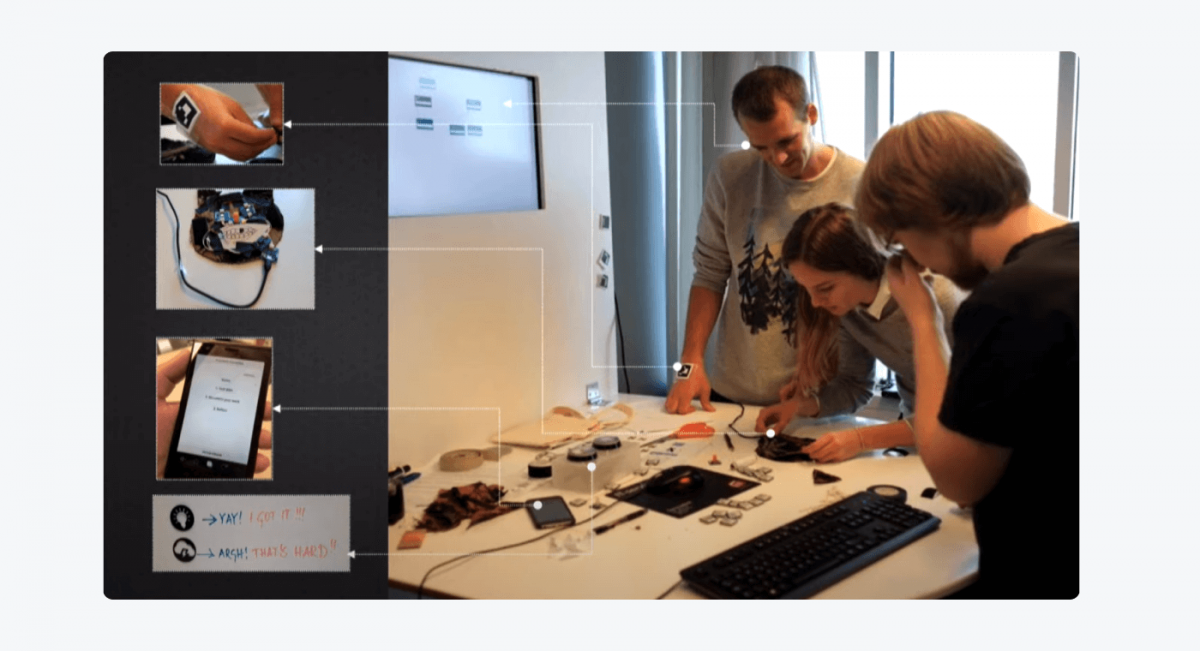
We can collect data about where they [students] are looking. We can collect data about where their hands are, how they're moving. We can collect what they're saying. We can analyze the different tones and cadences of their voices. We can analyze any gaps in their speech. We can, of course, look at what they're building. We can analyze the way that they're interacting with the technologies that they're using to help them in their collaborative problem-solving activity.

However, the use of AI for research concerning the very nature of learning is quite different from the general use of such technologies in a regular classroom environment. For the moment, AI helps us collect and analyze data about the way people learn and collaborate. AI assistants who would handle more complex tasks in education are still impossible without a high-level artificial general intelligence.
Machine learning is helping with research and many other “behind the scenes” processes within educational institutions. But there are many hopes and fears linked with the rapid development of AI tools.
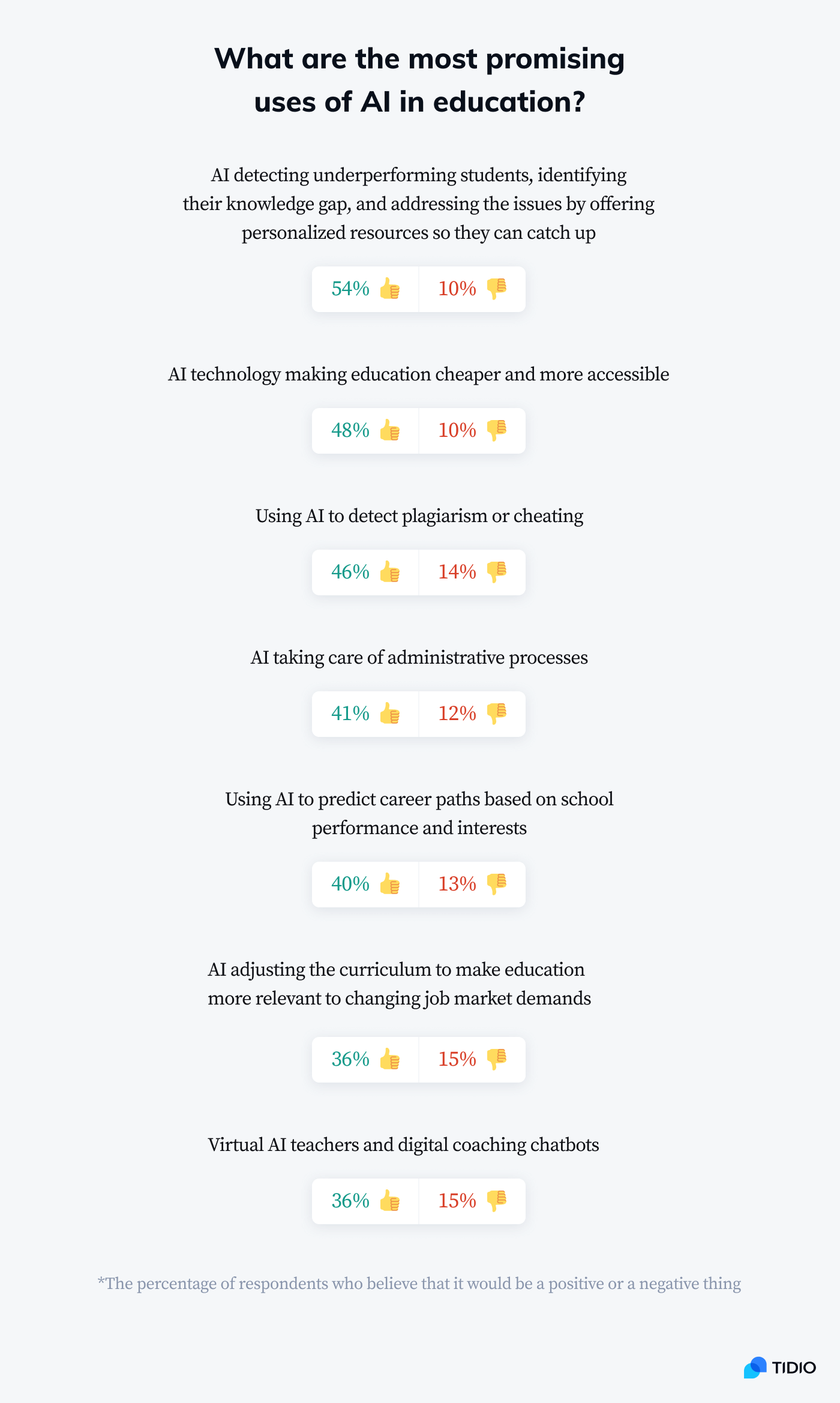
Our survey participants were rather skeptical about most applications of artificial intelligence in the context of teaching. The quick-detection system of underperforming students was the only idea that found more than 50% of enthusiasts.
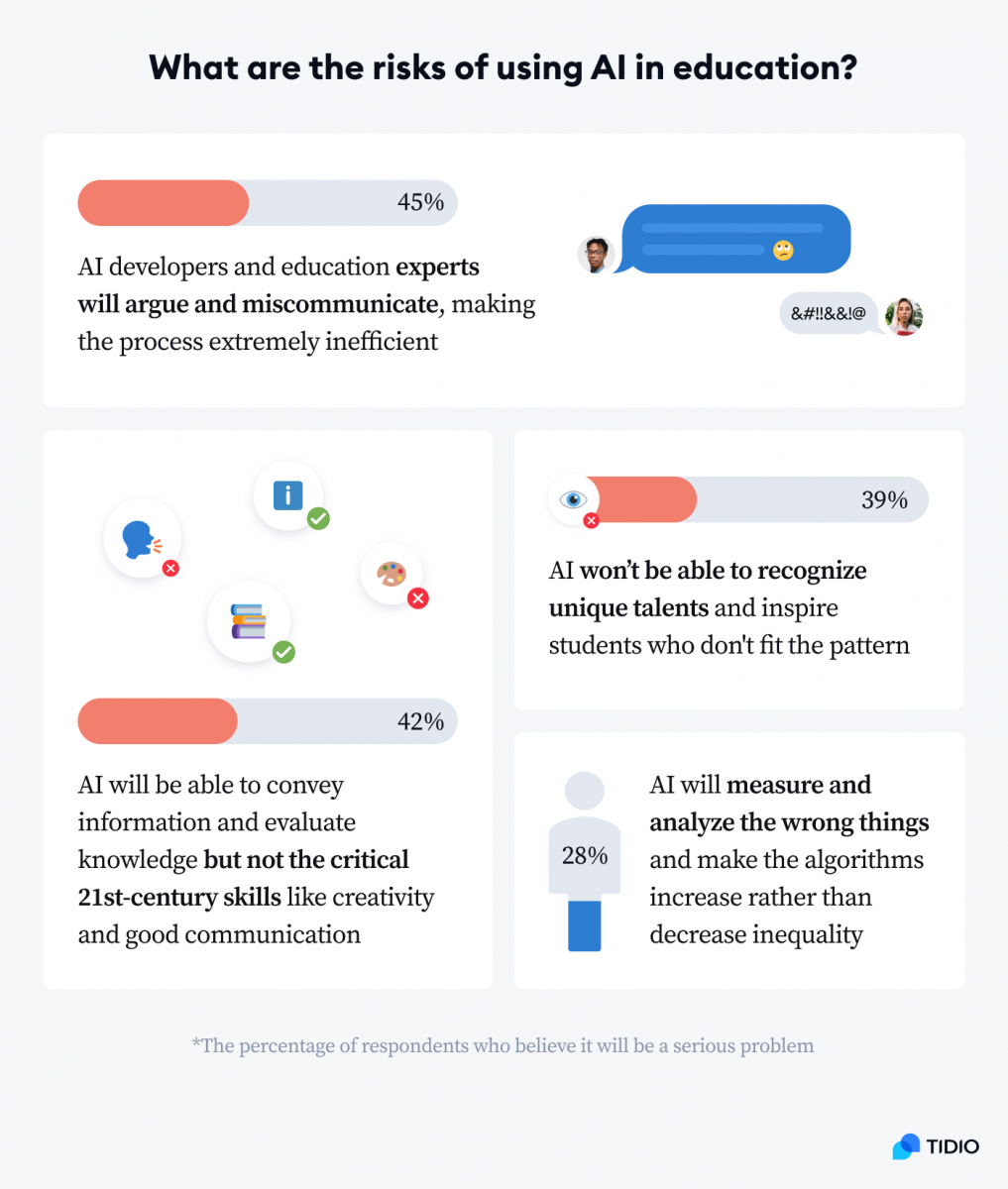
While evaluating the potential risks of AI in education, our respondents focused on possible problems linked with communication. AI developers and education experts are unlikely to communicate effectively (according to 45% of respondents), let alone create together a solution that would be able to teach others to communicate well.
These concerns are justified, as even today we have huge problems drawing conclusions from the data collected by schools. Achieving consensus can be as much a political challenge as a technological one.
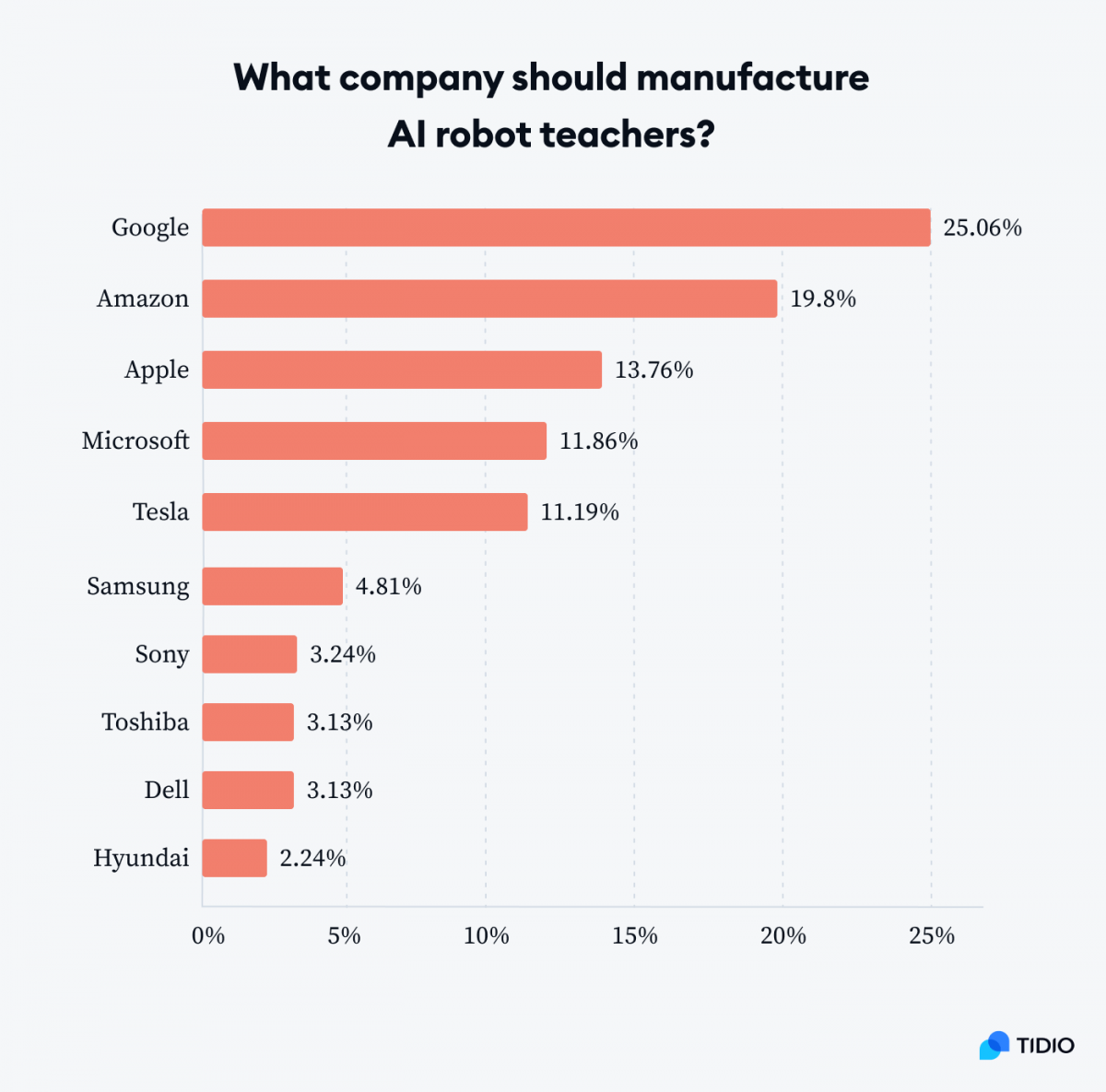
We also asked about potential candidates to create AI solutions for the education system. Google was the most popular choice, but there were also many voices that argued against involving GAFAM tech giants. An open-source standard created beyond the control of big tech seems like a safer bet. Amazon, with its questionable business ethics, taking control of the education system sounds like an idea straight out of a cyberpunk thriller.
Conclusion
The question of whether AI will have a positive or negative impact on education depends on several factors.
While it will certainly streamline some of the processes—like grading, checking attendance, and planning—we can’t expect AI and software to completely replace traditional, classroom-based education.
Most of the key skills for students are based on interaction with others rather than the acquisition of knowledge. Whereas technology provides easier access to unlimited resources and the ability to interact with people remotely, it is not enough.
Additionally, even today we have huge problems with measuring student performance effectively. The data sets that we feed into machine learning algorithms may already be biased. There is a big risk AI will analyze the wrong indicators and make the algorithms increase rather than decrease inequalities.
Sources:
- Global Education Technology Market Size
- The Solution to Our Education Crisis Might be AI
- Rose Luckin: Machine Learning and Human Intelligence, the Future of Education
- 5 Examples of Artificial Intelligence in the Classroom
- Ask the Expert: Online Learning vs. Classroom Learning
- Conversational Learning: How Chatbots Open up New Approaches to Training
- How Is Artificial Intelligence Changing the Recruiting Process?
- The University Student’s Guide To Ethical AI Use
- Is Amazon ethical?
Methodology:
For this study about AI, e-learning, and new trends in education, we collected answers from 1,027 respondents. We used Mechanical Turk and Reddit.
Respondents were 53% males and 47% females. The sample’s average age was 38 with a standard deviation of 13. Considering such age and gender makeup, the study’s findings can be extrapolated to the general US population.
Respondents had to answer about 20 questions the majority of which were scale-based or multiple choice. The survey had an attention check question.
Fair Use Statement:
Has our research helped you learn more about the use of technology and AI in education? Feel free to share statistics from this study. Just remember to mention the source and include a link to this page. Thank you!

